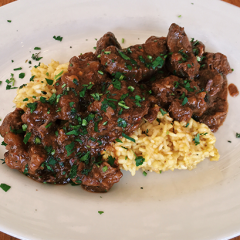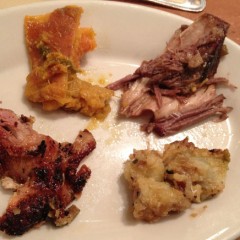
Heirloom Cornbread Waffles with Roasted Strawberry Compote
Beautiful summer brunch special running at the Roadhouse right now If you’re thinking of going out for brunch, give some thought to swinging by the Roadhouse Saturday or Sunday for delicious cornbread waffles. This dish will only be on the menu for the next two weekends while the local berries are at their best! Sous […]
Read more »


Zingerman’s Art for Sale